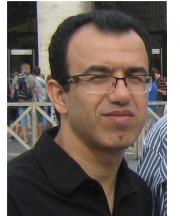Bioavailability of soil heavy metals as influenced by biochar and rhizosphere bacteria in the white willow (Salix alba L.) phytoremediation process
Biochar is known as a widely-use amendment in improving phytoremediation efficiency through the increase of plant growth; whereas its influence (either individually or in combination with bacteria) on the reduction of heavy metals (HMs) bioavailability of soil is an important advantage. This study was planned to assess the effects of separately and combined of biochar produced by forest wood wastes of hornbeam at three levels of 0, 2.5 and 5% of soil dry weight and Pseudomonas fluorescens bacteria on growth properties of potted white willow (Salix alba L.) seedling in a HM contaminated soil (Pb, Cu, and Cd). The variation of bioavailability (BA) and removal efficiency (RE) indexes, and bioaccumulation (BCF) and translocation (TF) factors also were analyzed in the treatments. The experiment was conducted under greenhouse condition for a 160 days’ period. The results showed that the variation in most growth components of seedlings was significant in the separate and combined treatments. The combined treatment of bacteria-biochar (at 5% level) increased the dry weight of leaf, shoot, root and total plant about 59, 36, 142, and 85% in comparison to the control (without the biochar and bacteria). In the biochar treatments, the BA, RE (except Pb), BCF, and TF (only in 2.5% of biochar) for Pb, Cu, and Cd were 13-57, 4-47, 29-60, and 16-33% lower than those in control, respectively. These indexes were improved by up to 191, 79, 84, and 13% in the bacteria-biochar treatment in compared to the individual application of biochar. In overall, according to our findings, the combination of biochar-bacteria led to the HMs bioavailability and improving the white willow function to eliminate soil HMs. So that, co-application of biochar and bacteria as soil amendments can increase growth parameters in white willow seedling and improve HMs bioavailability of plant in phytoremediation process.
-
Synthesis of G-C3N4/Mxene Composite for Enhanced Photocatalytic Degradation of Eosin Y Dye in Aqueous Solutions Under Visible Light
Mehran Bijari, Afsaneh Shahbazi *, Vahid Vatanpour,
Journal of Sustainable Earth Trends, Oct 2024 -
The role of biochar in improving the survival, growth and physiological traits of Arizona cypress seedlings, in a semi-arid mountainous region
D. Ahmadi, M. Tabari *, S. E. Sadati, Y. Davoudi Karsalari, B. Mohammadi, K .Nourmohammadi
Iranian Journal of Forest, -
The Effect of Pure and Mixed Norway Spruce (Picea abies L.) Afforestationon Some Soil Physical and Chemical Characteristics
Shahab Rouyanian*, Masoud Tabari
Ecology of Iranian Forests, -
Optimization of Photocatalytic Degradation of Phenol Via Fe3O4@SiO2@TiO2 Magnetic Nanocomposite by Response Surface Methodology
Saeed Aghel, Nader Bahramifar *, , Mahdi Tanha Ziyarati
Journal of Water & Wastewater,



